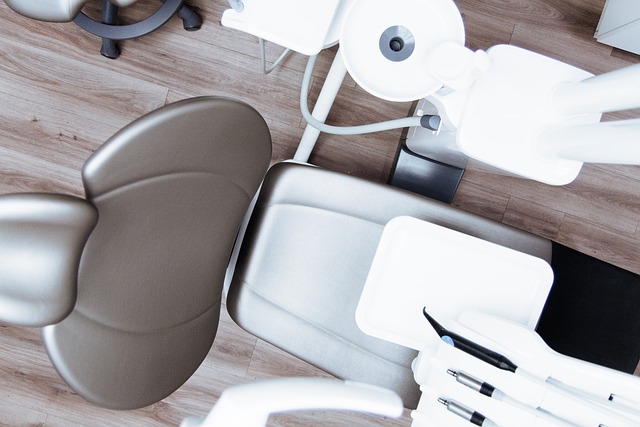No Braces Required: Can You Have Retainers Without Braces?
Imagine a world where achieving the perfect smile doesn’t involve enduring the discomfort and visible metalwork of traditional braces. Well, wonder no more, because the possibility of having retainers without braces is on the rise. With advancements in orthodontic technology, individuals can now straighten their teeth and achieve that coveted smile without the need for braces. In this article, we will delve into the fascinating realm of retainers without braces, exploring their effectiveness, benefits, and the potential limitations. So, if you’ve ever wondered whether you can skip the braces and opt for a more discreet alternative, keep reading to discover the exciting possibilities that lie ahead.
1. Understanding Retainers: A Key Orthodontic Tool for Straighter Teeth
Retainers are an essential tool in orthodontics that play a crucial role in achieving straighter teeth and maintaining the results of orthodontic treatment. These devices are custom-made for each patient and are typically worn after braces or clear aligner treatment to ensure that the teeth remain in their new, corrected positions.
A retainer works by exerting gentle pressure on the teeth and surrounding tissues, helping them settle into their new positions and preventing any unwanted shifting. There are two main types of retainers: removable and fixed. Removable retainers are made of clear plastic or acrylic and can be taken out for eating, brushing, and flossing. On the other hand, fixed retainers consist of a thin wire that is bonded to the back of the teeth, providing continuous support and long-term stability.
- Retainers are typically worn full-time immediately after orthodontic treatment.
- Over time, the wearing schedule may transition to only nighttime use.
- Retainers should be cleaned regularly to maintain oral hygiene and prevent bacteria buildup.
- It is important to follow the orthodontist’s instructions regarding retainer wear and care to ensure optimal results.
Regular check-ups with your orthodontist are necessary to monitor the condition of your retainers and make any necessary adjustments. If a retainer becomes damaged or broken, it is important to seek professional assistance promptly to avoid any potential relapse of tooth movement. By understanding the role of retainers in orthodontic treatment and following proper care guidelines, you can enjoy the benefits of a beautifully aligned smile for years to come.

2. The Role of Braces in Orthodontic Treatment: Exploring Alternatives
Orthodontic treatment plays a crucial role in correcting misaligned teeth and improving oral health. While braces have long been the go-to option for straightening teeth, there are now a range of alternatives available that can achieve similar results. These alternatives offer patients more options, flexibility, and comfort during their orthodontic journey.
One popular alternative to traditional braces is clear aligners, such as Invisalign. These custom-made, nearly invisible aligners are made from a smooth, BPA-free plastic material. They are worn over the teeth and gradually shift them into the desired position. Clear aligners are removable, allowing for easier cleaning and maintenance compared to braces. Additionally, they are more discreet, making them a great choice for individuals who prefer a more subtle orthodontic treatment. Another advantage of clear aligners is that they typically require fewer visits to the orthodontist for adjustments.

3. Retainers Without Braces: Achieving a Beautiful Smile with Minimal Intervention
Retainers without braces offer a minimally invasive and effective solution for achieving a beautiful smile. With advancements in orthodontic technology, patients now have options that require less intervention while still providing excellent results. Here are some key benefits of using retainers without braces:
- Less discomfort: Unlike traditional braces, retainers are typically more comfortable to wear as they do not involve brackets or wires. They are custom-made to fit snugly over your teeth, making them easier to adapt to.
- Invisibility: Many retainers are made from clear, transparent materials, making them virtually invisible when worn. This allows you to confidently go about your daily activities without feeling self-conscious about your orthodontic treatment.
- Easier oral hygiene: Retainers are removable, allowing you to maintain your regular oral hygiene routine. Unlike braces, you can easily brush and floss your teeth without any obstacles, reducing the risk of plaque buildup and tooth decay.
Retainers without braces are an excellent option for those who have already undergone orthodontic treatment and want to maintain the alignment and aesthetics of their smile. They provide a convenient and effective way to ensure that your teeth remain in their desired position. By wearing retainers as recommended by your orthodontist, you can enjoy the benefits of a beautiful smile with minimal intervention.

4. The Science behind Retainers: How They Work to Maintain Orthodontic Results
Retainers are an essential part of orthodontic treatment, playing a crucial role in maintaining the results achieved through braces or aligners. Understanding the science behind retainers can help you appreciate their significance and why they are necessary for long-term success.
Retainers primarily work by keeping your teeth in their new, desired positions, preventing them from shifting back to their original placement. This is important because after orthodontic treatment, your teeth and surrounding tissues need time to stabilize and adapt to their new positions. The science behind retainers involves two key aspects: stability and bone remodeling.
- Stability: Once your braces or aligners are removed, the ligaments and tissues around your teeth need time to settle and adjust to the new tooth positions. Retainers help in maintaining stability by providing a gentle force to keep the teeth in their correct alignment. They hold the teeth in place until the surrounding tissues fully adapt, ensuring your smile remains straight and aligned.
- Bone Remodeling: The bone surrounding your teeth undergoes a continuous remodeling process throughout your life. When you wear a retainer, it helps guide this remodeling process, allowing the bone to adapt and support the new tooth positions. This is why it is important to wear your retainer as prescribed by your orthodontist, as it ensures the bone properly remodels and solidifies around your teeth.

5. Retainers vs. Braces: Weighing the Pros and Cons for Your Orthodontic Journey
When it comes to orthodontic treatment, there are two popular options to consider: retainers and braces. Both options have their pros and cons, and it’s important to weigh them before making a decision. Let’s take a closer look at what each option offers:
Retainers:
- Pros:
- Retainers are removable, making it easier to clean your teeth and maintain good oral hygiene.
- They are generally less expensive than braces, which can be a more affordable option for some.
- Retainers are typically more comfortable to wear compared to braces, as they do not involve brackets or wires.
- Cons:
- Retainers may not be as effective in treating complex orthodontic issues or severe misalignments.
- They require diligent wear and may need to be worn for an extended period of time to achieve desired results.
- Retainers can be lost or damaged if not properly cared for.
Braces:
- Pros:
- Braces are highly effective in fixing a wide range of orthodontic problems, including severe misalignments.
- They can produce more noticeable and predictable results compared to retainers.
- Orthodontic adjustments can be made during regular visits, allowing for precise control over the treatment process.
- Cons:
- Braces can cause discomfort and irritation due to the presence of brackets and wires.
- Oral hygiene can be more challenging with braces, as food particles can get trapped and require extra effort to clean.
- Braces are more noticeable and may affect the wearer’s appearance, which can be a concern for some individuals.
6. Straightening Teeth with Retainers: Debunking Common Myths and Misconceptions
Retainers are often misunderstood when it comes to their role in straightening teeth. Let’s debunk some common myths and misconceptions surrounding the use of retainers:
1. Retainers are only for post-braces use: While retainers are commonly used after braces to maintain the alignment of teeth, they can also be used as a standalone treatment for minor misalignments. Retainers work by applying gentle pressure to guide teeth into their desired positions, effectively straightening them over time. So, whether you’ve had braces or not, retainers can help you achieve a straighter smile.
2. Retainers are uncomfortable and bulky: This is a common misconception. Modern retainers are designed to be slim, discreet, and comfortable. Made from lightweight materials, they are custom-fit to your mouth, ensuring a snug and comfortable fit. With regular wear, you’ll hardly notice you’re wearing a retainer, and they won’t interfere with your speech or daily activities.
7. Is a Retainer-Only Approach Right for You? Factors to Consider for Effective Orthodontic Treatment
Factors to Consider for Effective Orthodontic Treatment
When it comes to orthodontic treatment, one approach to consider is the retainer-only method. However, before deciding if this approach is right for you, there are several factors to take into account:
- Severity of Misalignment: The retainer-only approach is typically suitable for cases of mild to moderate misalignment. If you have severe orthodontic issues, such as significant crowding or bite problems, other treatment options may be more appropriate.
- Compliance: Successfully using a retainer-only approach requires strict compliance. This means wearing your retainer consistently and following your orthodontist’s instructions precisely. If you are not confident in your ability to adhere to these requirements, alternative treatments that are less reliant on patient compliance may be a better choice.
- Age: Age can play a role in determining whether a retainer-only approach is suitable. This method is often more effective for younger patients whose jaws are still growing and developing. Adults may require additional interventions to achieve desired results.
A retainer-only approach can offer numerous advantages, including lower costs and reduced treatment time. However, it is crucial to consult with your orthodontist to evaluate your specific situation and determine if this method aligns with your orthodontic needs and goals.
Frequently Asked Questions
Q: Can you have retainers without braces?
A: Absolutely! Retainers can be used independently without braces in certain cases.
Q: How do retainers work?
A: Retainers are custom-made oral appliances designed to hold teeth in their correct positions after braces have been removed. They help prevent teeth from shifting back to their original positions.
Q: Are retainers necessary after braces?
A: Yes, retainers are a crucial part of orthodontic treatment after braces. They help maintain the results achieved by braces and ensure long-term stability for your teeth.
Q: Can retainers fix crooked teeth without braces?
A: Retainers alone cannot fix crooked teeth. They are primarily used for maintaining the alignment achieved through braces or other orthodontic treatment. In cases where teeth are severely misaligned, braces or other corrective measures may be required.
Q: How long do you need to wear retainers?
A: The duration for wearing retainers varies depending on individual circumstances. Typically, they are worn full-time for the first few months and then gradually transitioned to nighttime use only. However, it’s essential to follow your orthodontist’s instructions for the recommended duration.
Q: Are there different types of retainers?
A: Yes, there are different types of retainers available. The most common ones include removable retainers, which can be taken out for eating and cleaning, and fixed retainers, which are bonded to the back of the teeth and cannot be removed.
Q: Can retainers be uncomfortable to wear?
A: Initially, it is common to experience some discomfort or difficulty speaking when wearing retainers. However, this usually subsides as your mouth adjusts to the appliance. If discomfort persists, it’s essential to consult your orthodontist.
Q: How should you care for your retainers?
A: Proper care is crucial to maintain the effectiveness and longevity of your retainers. You should clean them regularly, soak them in a denture cleaner or mild soapy water, and avoid exposing them to heat or excessive force.
Q: Can retainers be lost or damaged easily?
A: Retainers can be lost or damaged if not properly cared for. It’s important to store them in a protective case when not in use and avoid placing them in hot water or exposing them to any extreme conditions.
Q: Are retainers covered by dental insurance?
A: Dental insurance coverage for retainers varies depending on the specific policy. It is advisable to check with your insurance provider to determine the extent of coverage for orthodontic treatment, including retainers.
Q: Can I get retainers without braces if I previously had braces?
A: Yes, if you previously had braces and your teeth have remained in their corrected positions, your orthodontist may recommend retainers to maintain the alignment achieved.
Q: Is it possible to get retainers without braces for minor tooth movement?
A: In some cases of minor tooth movement, retainers may be used as a standalone treatment. However, it is crucial to consult with an orthodontist to determine the most suitable and effective treatment plan for your specific needs.
In Conclusion
In conclusion, the notion of having retainers without braces is indeed possible. While braces have long been the traditional method for correcting misaligned teeth, retainers can also play a vital role in achieving a straight and beautiful smile. By utilizing modern advancements in orthodontic technology, individuals can now opt for retainers alone to maintain and improve their dental alignment.
Key Takeaways:
1. Retainers alone can help straighten teeth: With the assistance of retainers, it is possible to correct minor misalignments and achieve a straighter smile without the need for braces.
2. Retainers are effective in maintaining alignment: Even after braces are removed, retainers can ensure that teeth remain in their proper positions, preventing any relapse.
3. Advanced orthodontic technology supports retainer-only treatments: Thanks to technological advancements, orthodontists can design and create custom-fit retainers that provide effective results in aligning teeth.
4. Individual suitability may vary: It is important to consult with a qualified orthodontist to determine if retainers without braces are a suitable treatment option based on individual dental needs.
5. Consistency is key: Wearing retainers as instructed by the orthodontist is crucial for the success of any orthodontic treatment, whether with or without braces.
By understanding the possibilities and benefits of retainers without braces, individuals can make informed decisions about their orthodontic journey. Remember, every smile is unique, and a professional consultation is always the best way to determine the most suitable treatment plan for achieving your desired results.






